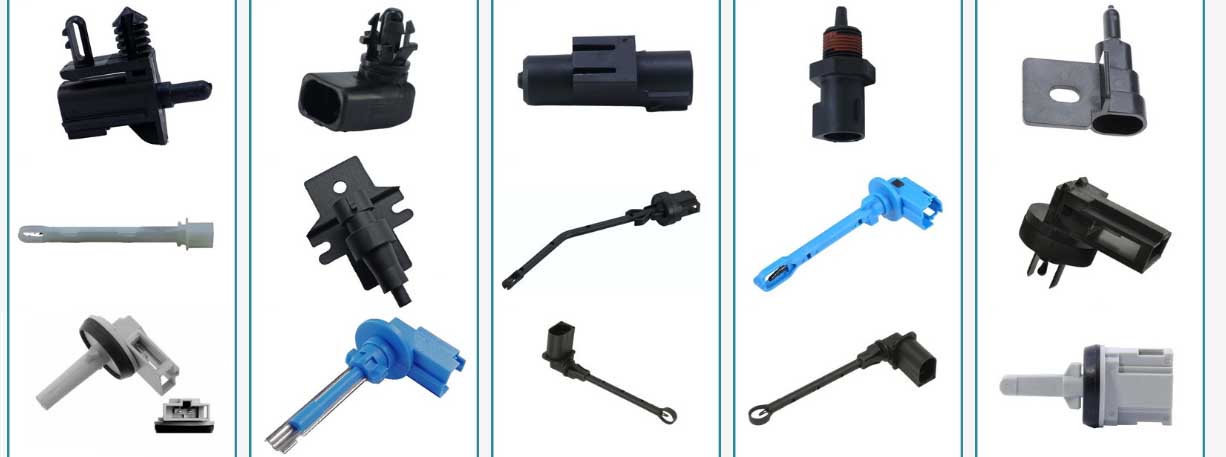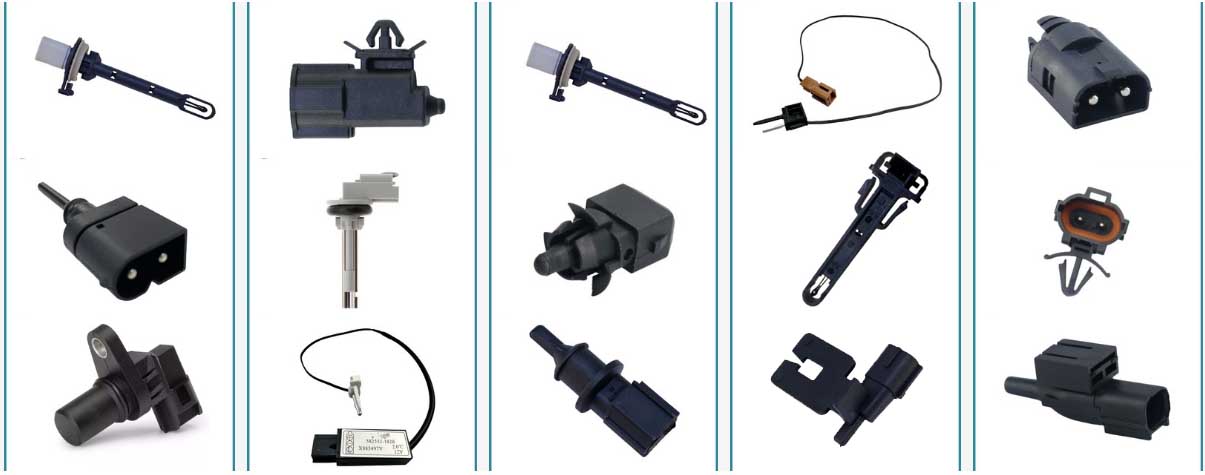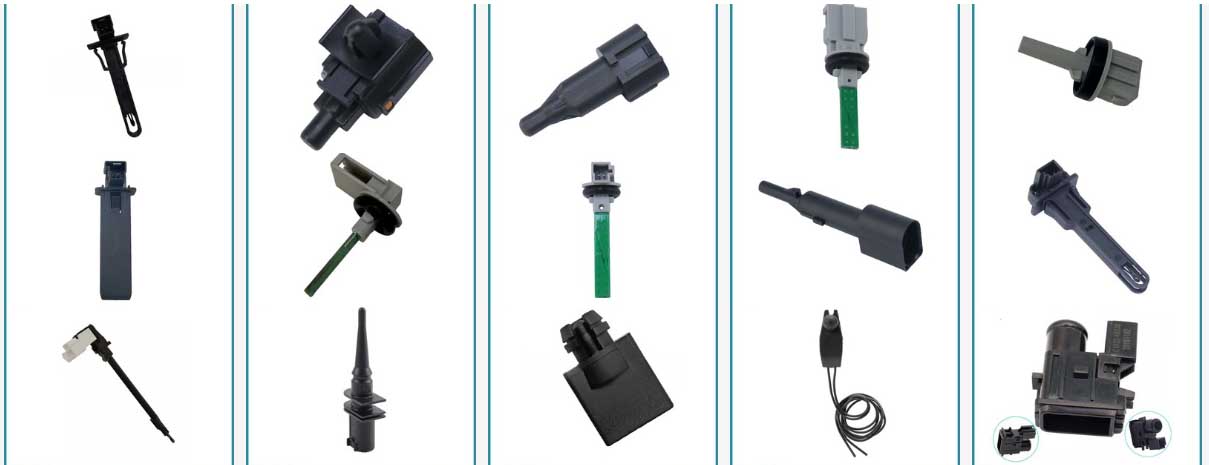Temperature is an important parameter that reflects the thermal load state of the engine. In order to ensure that the control system can accurately control the working parameters of the engine, the engine coolant temperature, intake temperature and exhaust temperature must be monitored at any time to correct the control parameters, calculate the mass flow of the air inhaled into the cylinder, and perform exhaust purification.
1. Coolant temperature sensor
Engine Coolant Temperature, ECT temperature sensor. Located on the waterway of the engine cylinder head, cylinder block or water pipe, usually installed on the thermostat housing. For engines using electronic thermostats, there are generally two temperature sensors; one is located on the thermostat housing and the other is located at the radiator outlet.
The coolant temperature sensor is used to monitor the temperature of the engine coolant and transmit the temperature signal as the engine temperature signal to the engine control module ECM. The ECM implements the following control based on this signal.
Automobile engine temperature detection sensor
2. Intake temperature sensor
Mainly detects the air temperature in the air duct and inputs the intake temperature signal to the EUC as a fuel injection and ignition timing correction signal. Mainly installed on the intake hose of the air filter and the air flow sensor.
Engine intake air temperature detection sensor
3. Transmission oil temperature sensor
The higher the temperature, the lower the resistance. The computer measures the temperature of the automatic transmission hydraulic oil according to the change of its resistance, which is used as the basis for the computer to perform shift control, oil pressure control and lock clutch control. Installed on the valve plate inside the automatic transmission oil pan, it contains a semiconductor thermistor with a negative temperature resistance coefficient.
4. Exhaust temperature sensor (catalyst temperature sensor)
Alias: catalytic temperature sensor, the main function is to quickly send out an alarm signal when the catalytic converter is abnormally heated, so as to protect the catalytic converter and prevent failures caused by high temperature. This sensor is mainly installed behind the catalytic converter transformer.
5. EGR exhaust gas circulation monitoring temperature sensor
The EGR monitoring temperature sensor detects the temperature of the recirculated exhaust gas in the EGR system to ensure that the system works properly. Reduce the content of NOx and S compounds and other harmful gases in automobile exhaust.
Valve pipeline temperature measurement, exhaust emission detection temperature sensor
6. External temperature sensor
The external temperature sensor is also called the ambient temperature sensor, which is a sensor element of the automatic air conditioning control system. The outside temperature sensor is usually installed on the front bumper mounting bracket and is also a thermistor. Its function is to detect the temperature outside the car. The control system will determine the control method based on the difference between the outside temperature and the inside temperature. Na primer, when the ambient temperature is lower than 5°C, the air conditioning control system will disconnect the compressor clutch power supply and stop the air conditioning refrigeration system.
7. In-car temperature sensor
The in-car temperature sensor is also a sensing element of the automatic air conditioning control system. It is usually installed at the bottom of the dashboard and is a thermistor with a negative temperature coefficient. The resistance of the thermistor will gradually decrease as the temperature value increases. Its function is to detect whether the temperature inside the car reaches the set value to control the operation of the air conditioning system.
8. Sunlight temperature sensor
This device is mainly installed at the air outlet of the air conditioner to detect the temperature change on the surface of the evaporator to control the working condition of the compressor.
9. Thermistor temperature sensor
The cooling fan of the radiator is controlled according to the temperature signal of the coolant and is installed on the circulation channel of the radiator coolant.
10. Air Conditioner Evaporator Outlet Temperature Sensor
The evaporator outlet temperature sensor is installed on the evaporator plate of the automobile air conditioning system to detect the temperature change on the evaporator surface and control the working condition of the compressor. Pri delu, the air conditioner evaporator outlet temperature sensor detects the temperature signal on the evaporator surface and converts it into an electrical signal and inputs it to the ECU of the temperature control system. After the ECU compares the input temperature signal with the set temperature adjustment signal, it controls the on and off of the electromagnetic clutch of the air conditioner compressor, thereby controlling the operation of the compressor. Hkrati, the temperature signal detected by this sensor can also be used to prevent ice blockage in the evaporator.
 English
English العربية
العربية Български
Български 粤语
粤语 中文(简体)
中文(简体) 中文(漢字)
中文(漢字) Nederlands
Nederlands Suomi
Suomi Français
Français Deutsch
Deutsch Ελληνικά
Ελληνικά Magyar
Magyar Italiano
Italiano 日本語
日本語 한국어
한국어 Polski
Polski Português
Português Română
Română Русский
Русский Slovenščina
Slovenščina Español
Español Svenska
Svenska ภาษาไทย
ภาษาไทย Türkçe
Türkçe Tiếng Việt
Tiếng Việt





